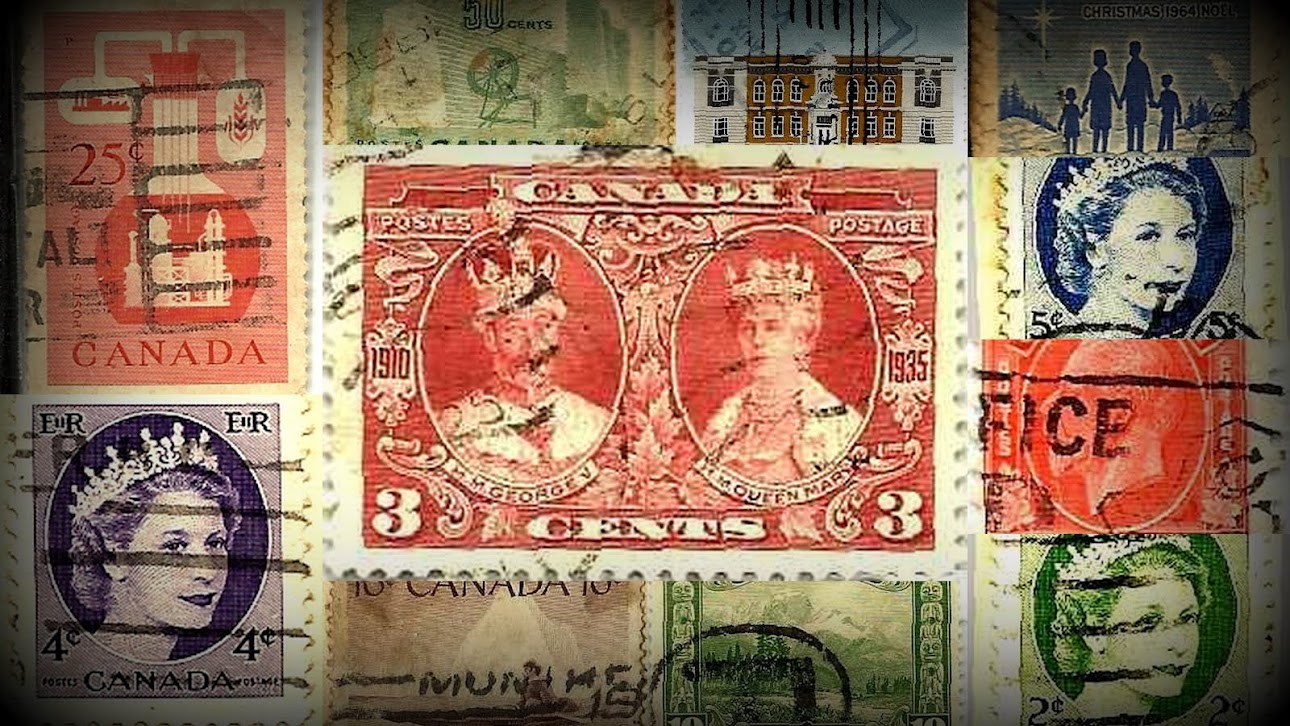 |
| Definitive Inuk & Kayak Canada 10¢ 1955 |
1955 Definitive Inuk & Kayak 10¢ Canada
Text: 10¢ Canada Post
Condition: Ø = used/cancelled
Title: Eskimo
in a kayak
Face value: 10
Stamp Currency: cent
Country/area: Canada
Year: 1955-02-21
Set: 1955 Canoeing
Stamp number in set: 1
Basic colour: Brown
Exact colour: Brown White
Usage:
Definitive
Type: Stamp
Theme: Canoeing
Stamp subject: Eskimo in a kayak
NVPH number:
Michel number: 302
Yvert number: 278
Scott number: 351
Stanley Gibbons number: 477
Printing office: Canadian Bank Note Company Ltd
Perforation: 12
Size: 38
x 26
Watermark: Without watermark
Paper:
Printing: Recess
Buy Now: Bid Now:
Inuk & Kayak Canada
The Inuit (Inuktitut: ᐃᓄᐃᑦ, "People") are a group of
culturally similar indigenous peoples inhabiting the Arctic regions of
Greenland, Canada, the United States, and eastern Siberia. Inuit is a plural
noun; the singular is "Inuk". The Inuit languages are classified in
the Eskimo-Aleut family.
In the United States, the term Eskimo is
commonly used in reference to these groups, because it includes both of
Alaska's Yupik and Inupiat peoples while "Inuit" is not proper or
accepted as a term for the Inupiat. No collective term exists for both peoples
other than "Eskimo".
However, natives in Canada and Greenland
view the name as pejorative and "Inuit" has become more common. In
Canada, sections 25 and 35 of the Constitution Act of 1982 named the
"Inuit" as a distinctive group of aboriginal Canadians who are not
included under either the First Nations or the Métis.
The Inuit live throughout most of the
Canadian Arctic and subarctic in the territory of Nunavut; "Nunavik"
in the northern third of Quebec; "Nunatsiavut" and
"Nunatukavut" in Labrador; and in various parts of the Northwest Territories,
particularly around the Arctic Ocean. These areas are known in Inuktitut as the
"Inuit Nunangat". In the United States, Inupiat live on the North
Slope in Alaska and on Little Diomede Island. In Russia, they live on Big
Diomede Island. The Greenlandic Inuit are the descendants of migrations from
Canada and are citizens of Denmark, although not of the European Union.
In the United States, the term
"Eskimo" is commonly used, because it distinguished both Yupik and
Inupiat peoples from other native Americans. The Yupik do not speak an Inuit
language or consider themselves to be Inuit. However, as the term is a—probably
Montagnais– exonym and has been widely folk etymologized as meaning "eater
of raw meat" in Cree, it has become considered a pejorative or even racial
slur among Canadian and English-speaking Greenlandic Inuit.
In Canada and Greenland,
"Inuit" is preferred. Inuit is the Eastern Canadian Inuit (Inuktitut)
and West Greenlandic (Kalaallisut) word for "People". Since Inuktitut
and Kalaallisut are the prestige dialects in Canada and Greenland,
respectively, their version has become dominant, although every Inuit dialect
uses cognates from the Proto-Eskimo *ińuɣ – for example, "people" is
inughuit in North Greenlandic and iivit in East Greenlandic.
Kayak
The natives hunted sea animals from
single-passenger, covered seal-skin boats called qajaq (Inuktitut syllabics: ᖃᔭᖅ) which were extraordinarily buoyant, and
could easily be righted by a seated person, even if completely overturned.
Because of this property the design was copied by Europeans, and Americans who
still produce them under the Inuit name kayak.








